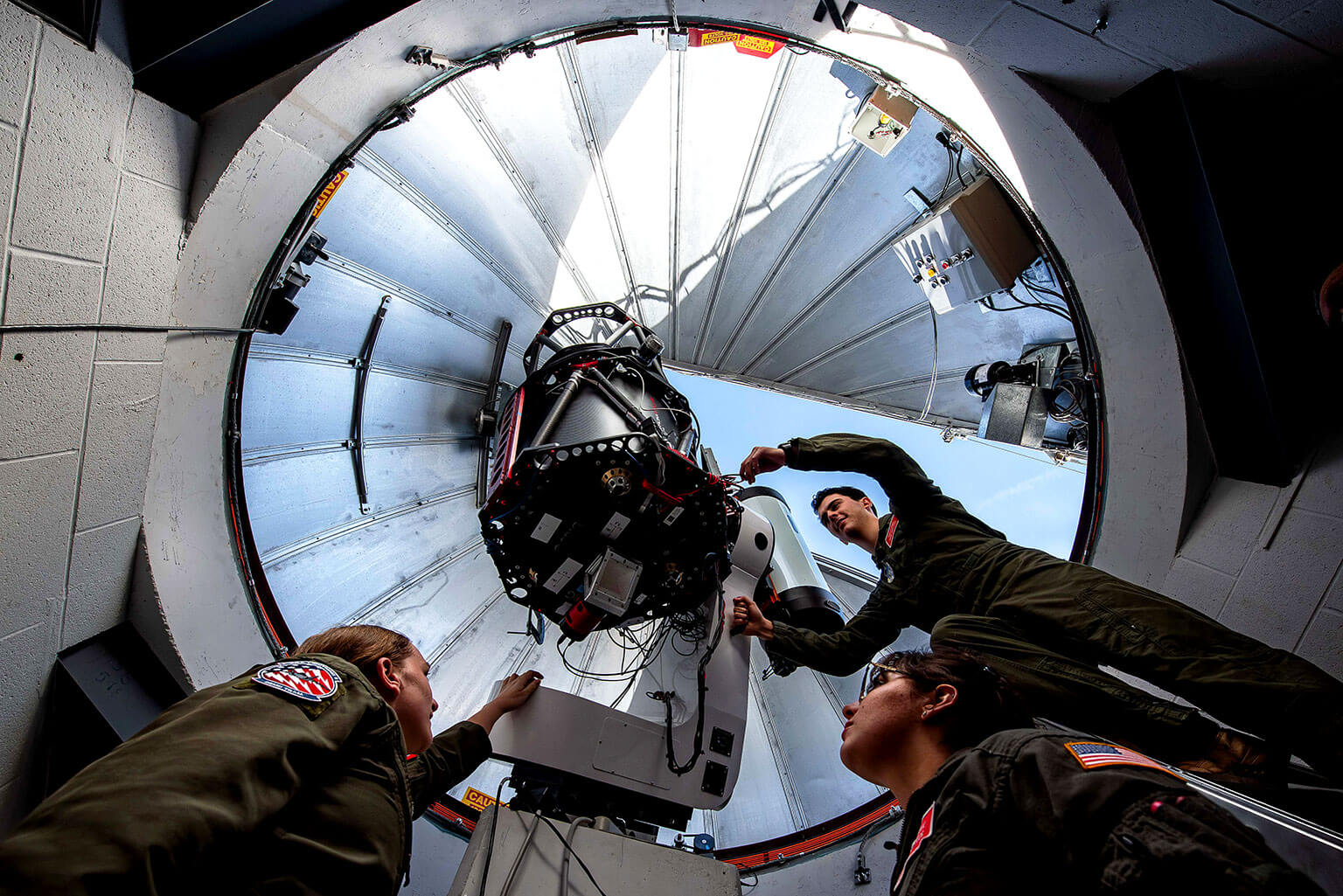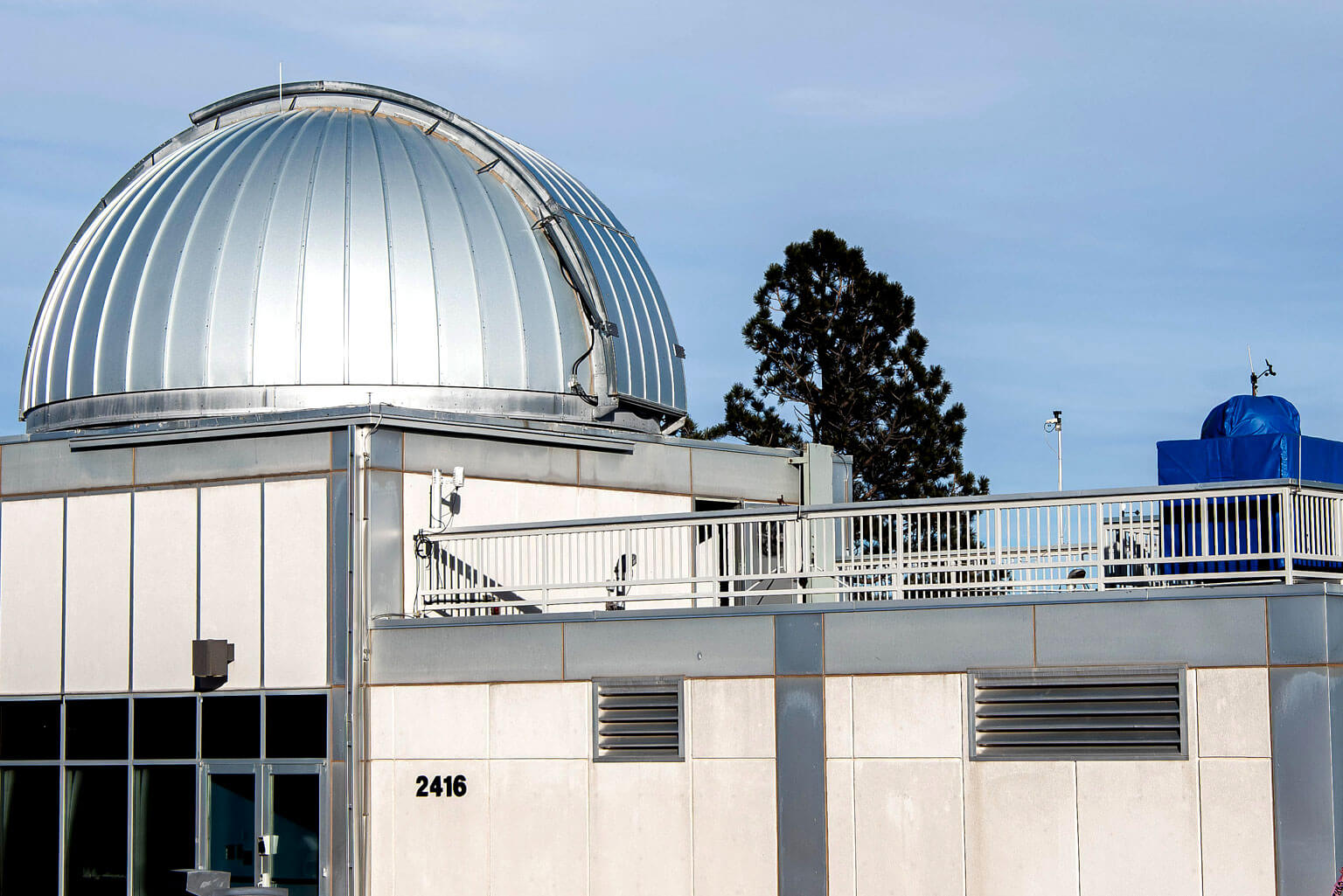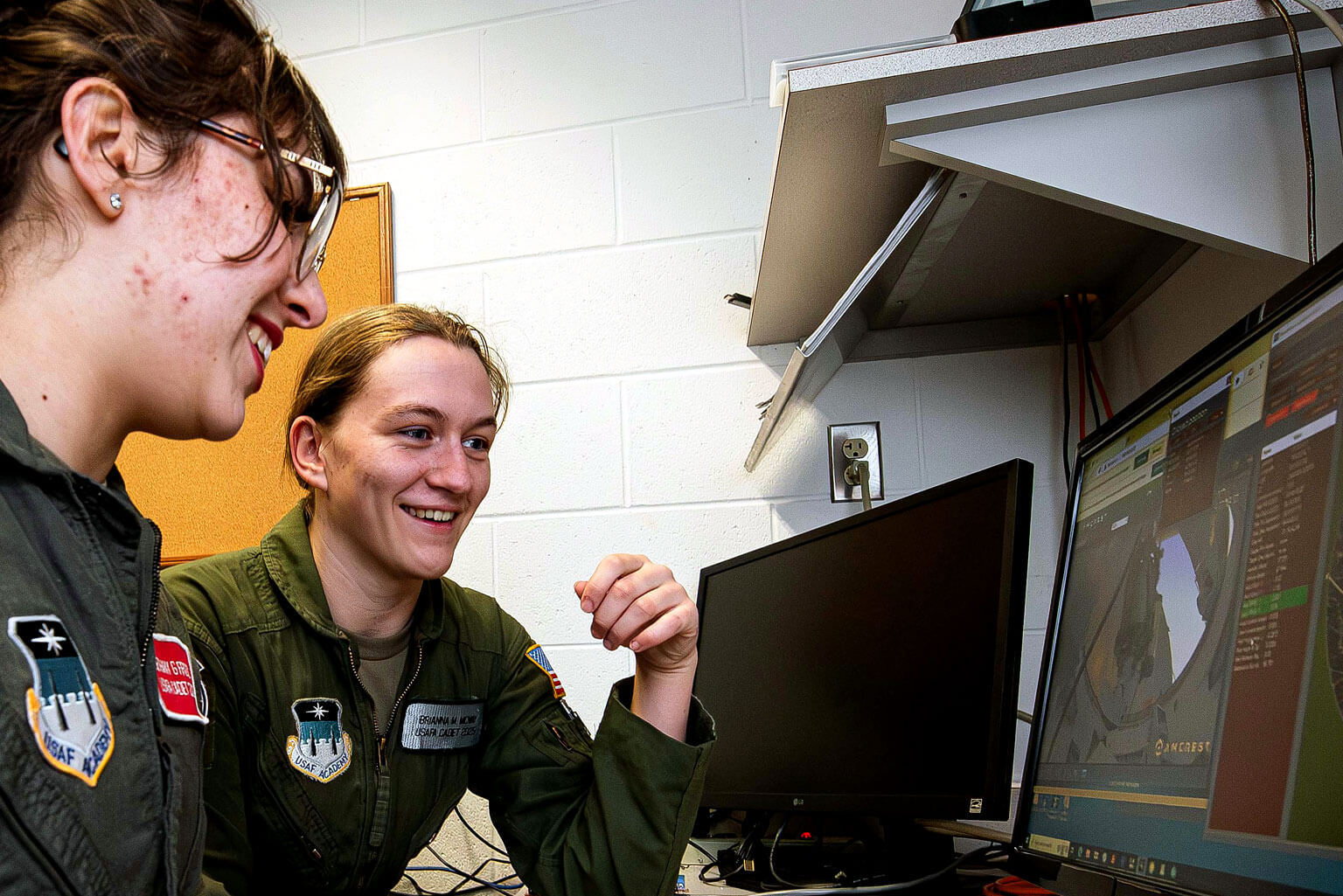Cadets survey stars in nighttime sky
 Cadet 2nd Class Brianna McVay, left, and Cadet 3rd Class Bethany Firooz watch as Cadet 3rd Class Ryan Kovacs makes minor modifications to the 0.5-meter Falcon telescope in the U.S. Air Force Academy Observatory Jan. 19, 2024. (U.S. Air Force photo by Trevor Cokley)
Cadet 2nd Class Brianna McVay, left, and Cadet 3rd Class Bethany Firooz watch as Cadet 3rd Class Ryan Kovacs makes minor modifications to the 0.5-meter Falcon telescope in the U.S. Air Force Academy Observatory Jan. 19, 2024. (U.S. Air Force photo by Trevor Cokley)
By Randy Roughton
U.S. Air Force Academy Strategic Communications
U.S. AIR FORCE ACADEMY, Colo. – In the Department of Physics and Meteorology cadets keep watch over space through the 1-meter telescope in the U.S. Air Force Academy Observatory control room.
Through the 1-meter telescope, cadets track hazardous near-Earth asteroids and other space objects, view supernovas, study exoplanets and conduct valuable research.
“It’s hard to visualize the concepts when it’s just a bunch of words and equations, but when you’re actually looking at the stars, you’re understanding what it means for something to be this bright,” Firooz said. “You’re seeing that visually, rather than just working out conceptual problems.”
Supernova tracking
Recently, Physics and Meteorology cadets and faculty have been tracking the decade’s brightest supernova in the Pinwheel Galaxy. A supernova occurs when a giant red star collapses. The Pinwheel Galaxy is a spiral-shaped galaxy about 21 million light-years from Earth, according to NASA.
“We also have some exciting things going on right now in the space situational awareness realm,” said Lt. Col. Benjamin Roth, director of astronomical research and the observatory. “We have quite a bit of historical data, and we are looking at geostationary satellites, the spectral and polarization data and fingerprinting those satellites. As far as we know, we are the only institution doing this.”
State of the art research telescopes
The cadets work on 1-meter and half-meter telescopes in the Academy Observatory. The state-of-the-art 1-meter telescope was installed in 2019 and replaced a telescope built five years before Neil Armstrong walked on the moon in 1969. It is the largest academic research telescope in Colorado.
Cadets direct the telescopes in the control room, using an astronomical camera that is attached to the telescopes, said Roth. A charge-coupled device collects the photons and converts them into electrons to create the signal that the cadets record.
The department has three space-related research centers: the Center for Space Situational Awareness Research, also called CSSAR, the Space Physics and Atmospheric Research Center or SPARC, and the Astronomical Research Group and Observatory or ARGO. ARGO houses both telescopes at the Academy Observatory in collaboration with the worldwide Falcon Telescope Network.
Cadets can begin work in the observatory as early as their freshman year though they usually begin independent research as sophomores. Physics majors typically work on independent research as juniors or in the fall of their senior year.
 The U.S. Air Force Academy Observatory, pictured here Jan. 19, 2024, is the hub for the Falcon Telescope Network, a worldwide network of 50-cm Ritchey-Chrétien reflectors. (U.S. Air Force photo by Trevor Cokley)
The U.S. Air Force Academy Observatory, pictured here Jan. 19, 2024, is the hub for the Falcon Telescope Network, a worldwide network of 50-cm Ritchey-Chrétien reflectors. (U.S. Air Force photo by Trevor Cokley)
Physics and space opportunities
The space observation mission, along with other opportunities the major offers, helped cadets like Firooz select the Academy for their collegiate education.
“This opportunity was part of the reason I chose to come here,” Firooz said. “I was very interested in physics in high school, but I didn’t really know how to get ahead on that. I knew about research and making discoveries of something that I was interested in. So I wanted to pick a school that had a lot of undergrad research opportunities and resources to put toward that. The Academy gave me that opportunity.”
Firooz will spend part of her summer at the Maui Space Force Station, formerly known as the Air Force Maui Optical and Supercomputing site, conducting research under the guidance of the 15th Space Surveillance Squadron.
 Cadet 3rd Class Bethany Firooz, left, and Cadet 2nd Class Brianna McVay control Department of Physics and Meteorology telescopes in the U.S. Air Force Academy Observatory Jan. 19, 2024. (U.S. Air Force photo by Trevor Cokley)
Cadet 3rd Class Bethany Firooz, left, and Cadet 2nd Class Brianna McVay control Department of Physics and Meteorology telescopes in the U.S. Air Force Academy Observatory Jan. 19, 2024. (U.S. Air Force photo by Trevor Cokley)